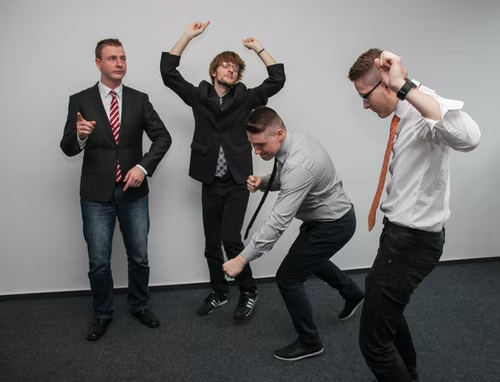What is a Panic Attack & How To Deal With It
When your heart goes on a bender, it’s called a panic attack. It’s like you’re living in an action movie and someone has just threatened your life. Your chest hurts and feels tight, you have trouble breathing, and you get dizzy and have the urge to throw up. You feel a surge of adrenaline, which makes you think you can do anything. You might start pulling out your hair or punching walls because…well, why not?
Nowadays, a sizable percentage of people suffer from panic attacks. These attacks are distinct from anxiety attacks in their intensity and incapacitating character. Panic attacks can occur at any time, when walking, conversing, sleeping, or in an elevator. It is a dangerous disease that affects both adults and children. However, if you have never encountered this type of problem before, there are a few indications to keep in mind to help you comprehend the condition.
Panic disorder is defined by symptoms such as recurrent attacks lasting over six months, chest pain, tremors, shortness of breath, stomach ache, numbness in the hands, perspiration, rapid heartbeat, and probable chills. These symptoms may indicate the onset of panic disorder, necessitating panic disorder therapy in America. Numerous residents of Americans seek therapy for panic disorder. This has led to a rise in the amount of clinics and physicians providing panic attack therapies.
You are not the only one who suffers from panic attacks. Panic attacks are very common and affect millions of Americans. It is the body’s natural response to stress or anxiety, which is most often brought on by certain triggers in life, or even in your own mind. But do not worry. There are many available treatments and medications to help manage this problem with your doctor’s supervision. In most cases, people can eliminate their reactions to factors that cause their panic attacks and will no longer have them at all, or only occasionally as a reaction to a particular set of circumstances only.
Anyone who has ever had a panic attack understands how frightening and disabling they can be. Intense panic episodes have a tendency to impair your quality of life in a variety of ways, including simple things like embracing the outdoors or unwinding with family members and friends. Using the tips in this article, you will be able to manage your panic attacks more effectively.
But, what causes these panic attacks?
Panic attacks can be triggered by excessive inhaling, prolonged stressful situations, activities that cause extreme physical responses (for instance, aerobic activity, too much coffee intake), and physical differences that occur as a result of disease or an unexpected change in lifestyle, but they can strike suddenly and without warning.
Panic attacks are a severe form of anxiety disorder. They are much more than just a “bad day” or temporary feelings of stress or uneasiness. They can be very frightening and can interfere with your ability to function in everyday life.
The good news is that panic attacks can be successfully treated. The first step is to understand exactly what they are and how they affect you. Panic attacks are sudden, intense episodes of fear that may include palpitations, sweating, shaking and shortness of breath. During a panic attack, your body is reacting like it is in danger when it really isn't.
Panic attacks should not be confused with other medical problems such as heart disease or hyperventilation syndrome. When someone has a panic attack, the symptoms are caused by the brain. People who have panic disorder (also called agoraphobia) may also experience physical symptoms before a panic attack occurs, including dizziness, nausea, hot flashes, chills or tingling in their body parts.
Panic attacks cannot be “cured,” but they can be effectively treated so that they don't get in the way of enjoying life or performing daily activities or work duties. Treatment for panic disorder usually includes some combination of medication and psychological therapy.
How to treat Panic Attacks
The nature of this condition is irrational, it cannot be explained. It's one of the reasons why so many people suffer from it. The body's response to this condition is due to its own overreaction to certain stimuli. This triggers the body's fight-or-flight response which in turn produces a cascade of physical symptoms like rapid heart rate, sweating, trembling and even nausea. These sensations are often described as unbearable or terrifying.
A person suffering from a panic attack experiences the world around him or her as frightening and dangerous. Many people misinterpret the symptoms as signs of a heart attack or some other serious medical problem.
The sensations that accompany this condition are real and sometimes severe but they are rarely dangerous; they are unpleasant and therefore frightening because they are unknown and unfamiliar. Some people experience these sensations frequently whereas others experience them only once or twice in their lifetimes
- Cognitive behavioral therapy
Cognitive behavioral therapy (CBT) emphasizes the critical role of behavioral and cognitive processes in comprehending and managing anxiety and panic episodes. Treatment focuses on ineffective, obstructive, and harmful behaviors, as well as irrational mental processes related to the persistence of symptoms.
- Breathing Exercise
The technique of 4-7-8 breathing is based on yoga breathing techniques. Pranayama is an ancient yogic technique that involves the regulation of one's breath. Numerous studies have demonstrated the substantial advantages of these kinds of mindfulness breathing techniques for relieving stress including relaxation. Dr. Andrew Weil invented the 4-7-8 breathing technique. He describes it as a “organic nervous system relaxant.”
- Aromatherapy
Aromatherapy is the practice of using essential oils to treat physical and mental ailments and to promote overall wellness. Essential oils are extracted from a variety of plant parts, such as flowers, twigs, leaflets, and fruits. There are countless varieties of natural ingredients, each with a distinct aroma and therapeutic capabilities. Additionally, these compounds can be mixed to generate new smells and medicinal properties.
Lavender: Famous because of its sedative properties, lavender oil is frequently used to aid in relaxation and unwinding. Lavender is said to help raise one's moods and alleviate anxiousness. This aroma can be applied at any time of day to promote relaxation. It is especially useful when used prior to bedtime to encourage healthy sleep. Additionally, lavender oil was shown to alleviate tension headaches, which are frequently co-occurring illnesses in patients with panic disorder.
You can do a variety of things to reduce and manage your panic attacks, but there is no magic cure to stop or eliminate them. First of all, it would help a lot if you learn to recognize the signs of a panic attack as it starts. This will enable you to take steps immediately to stop the attack from getting worse. There are other steps that you can also take towards reducing and stopping panic attacks altogether. Just follow these tips and hopefully, panic attacks should be easy to handle for you or even it will no longer be a problem for you.





